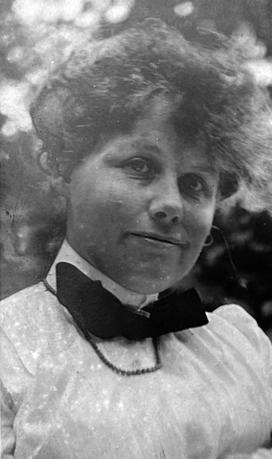In 1905, Katharine Gerould moved from a faculty position at Bryn Mawr College to the role of faculty wife at Princeton. In 1924, she wrote about the experience for the Alumni Weekly. She had believed, she said, that as when changing ministries, she would remain “in the service.”

Faculty wives had a place at Princeton, but that place was the ladies’ luncheon, the dinner table, the back bench in the bleachers. The University set substantial barricades between them and its monastic halls, although through sheer determination they carved their own paths in, finding quiet research positions in the libraries and the art museum. In 1920, faculty wives created a social and volunteerism club called the University League, which sponsored teas, talks, and other scholarly events. In 1927, the League began to publish a Business Register to advertise feminine skills such as typing to the men of the University, as Corinne Black notes in a 1990 article in the Library Chronicle.
Faculty wives had a place at Princeton, but that place was the ladies’ luncheon, the dinner table, the back bench in the bleachers.
In truth, faculty wives often served as unpaid research assistants: hunting down texts in the archives; taking notes in front of microfiche machines; typing, correcting, and writing bibliographic matter for their husbands’ publications. They might later receive brief notes of thanks in the books they helped to create. During this period, Princeton favored an ideal of heroic solitude: Great scholars do their best work while freed of earthly concerns. Taking flight to the Parnassus of pure thought, the scholar slips the surly bonds of Earth, which is where wives and other helpers live.
For her part, Gerould secured a life as a woman of letters, writing three novels and several collections of short stories. She regularly published essays and stories in magazines like Scribner’s, Harper’s, and The Atlantic Monthly. She never wrote much about Princeton, but she became a mentor to literary cubs of the University by serving as a judge, at the request of student groups, for short-story competitions and — with much praise — reviewing for The Daily Princetonian books of student verse and issues of the Nassau Literary Review. In 1923, The Bookman, a literary trade journal, singled her out for praise in a survey of Ivy authors: “It would be good for Princeton if she could claim Katharine Fullerton Gerould, whose short stories are among the finest in the English language.”
Yale invited her to give a lecture series, and Gerould wrote in PAW: “I think the gentlemen of my Princeton acquaintance never understood why I was so devoid of proper feeling as to accept.” Many years later, Princeton came around; today, the University’s library holds copies of every piece of her writing.











1 Response
Princeton Alumni Weekly
1 Year AgoFor the Record
The Princeton Portrait illustration of author Katherine Fullerton Gerould published in the May 15, 2019, issue was based on an incorrect reference photo. The story page now includes an accurate photo of Gerould.